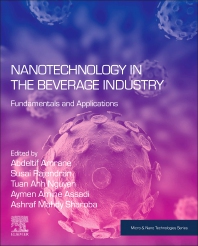Operations Perspective
How integrated is the beverage supply chain?
Current economic conditions highlight importance of effective beverage supply chain

Current economic conditions have provided sufficient evidence that has prompted more in-depth evaluation of supply chains and related issues in many industries, especially industries that utilize processing technology like the beverage group. The uncertainty of material, machinery and people flow has required beverage producers in all segments to re-evaluate how procedures, practices and methods are coping with some unprecedented operating conditions.
The core of these operations is the supply chain with effective execution in all phases, which includes product processing, packaged production, warehousing, pre-distribution and distribution — with some variations in function and terminology used. Historically, it has been an evolution from old-fashioned planning and scheduling in production control with a new name. With this in mind, a review of six decades in nearly every beverage area prompted two related issues to consider. First, there has to be a detailed understanding of how supply chains should operate, and second, there should be a realization of how the system does operate.
Observations, research and experience again reveal what is actually happening in execution — are we integrated or not, and if not, why?
The integration of one’s supply chain —and how it is executed — depends on whom you talk to and in what phase they perform? On numerous occasions, the search reveals that all phases are not aware of the domino effect that each segment holds and why integration is a necessity.
The best way to determine how well a system is integrated is to relate actual discussions with people in charge of a specific part of the supply chain.
For example, if you ask a distribution manager for an interpretation of the supply chain, the answer invariably will cover the responsibility of distributing product — with some awareness of the importance of product availability. If you ask a warehouse manager for a supply chain interpretation, the personnel likely will relate to inventories, rotation cycles and order fulfillment; however, that raises a hidden function within the warehouse: pre-distribution, a critical supply chain phase not used by many because it is unfortunately buried in warehouse costs.
Yet if you ask a production manager for a supply chain definition, the response will relate to production scheduling, packaging volatility and product mix. Some reference might include other phases of the supply chain.
These examples indicate a lack of integration per se, or that each phase doesn’t have to be acutely aware of the subsequent function. This is a false premise because the impacts on each phase are important and critical — it is a true domino affect process.
So, why does a supply chain have to be integrated?
You can’t really talk supply chain unless you recognize how tightly integrated each phase is with the next one. Each phase in dependent on the next or the system breaks down. Therefore, focusing on one phase over another can throw the entire supply chain process into turmoil. There has to be consensus.
Therefore, to firmly emphasize, each step depends on the next or there is no supply and no chain to integrate. Separate and apart won’t function, practically or realistically — it just doesn’t work that way.
Looking for a reprint of this article?
From high-res PDFs to custom plaques, order your copy today!







